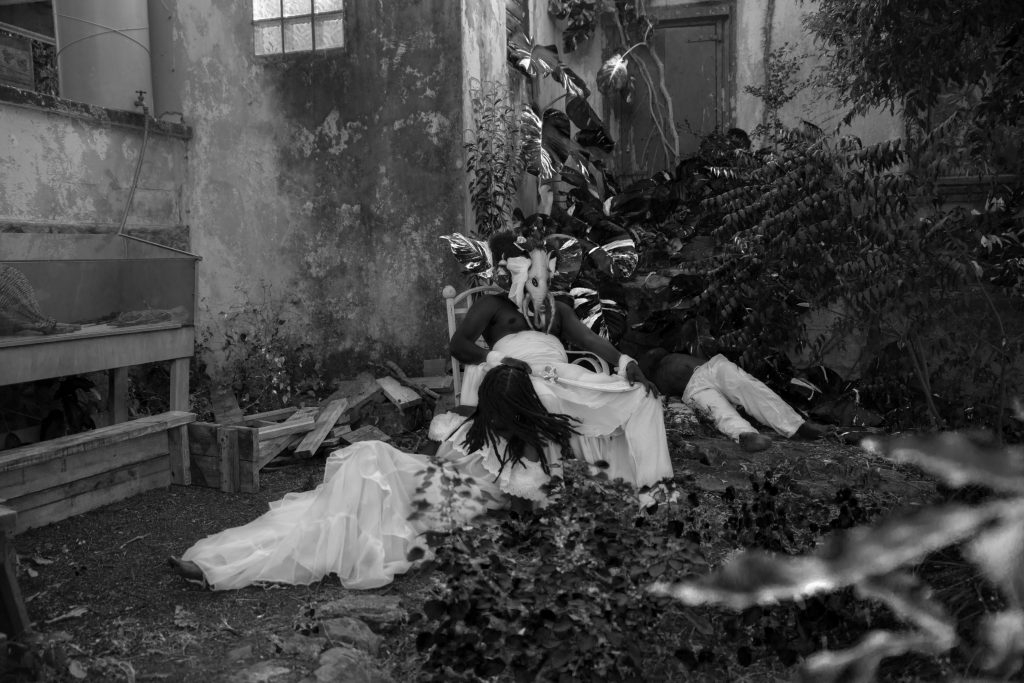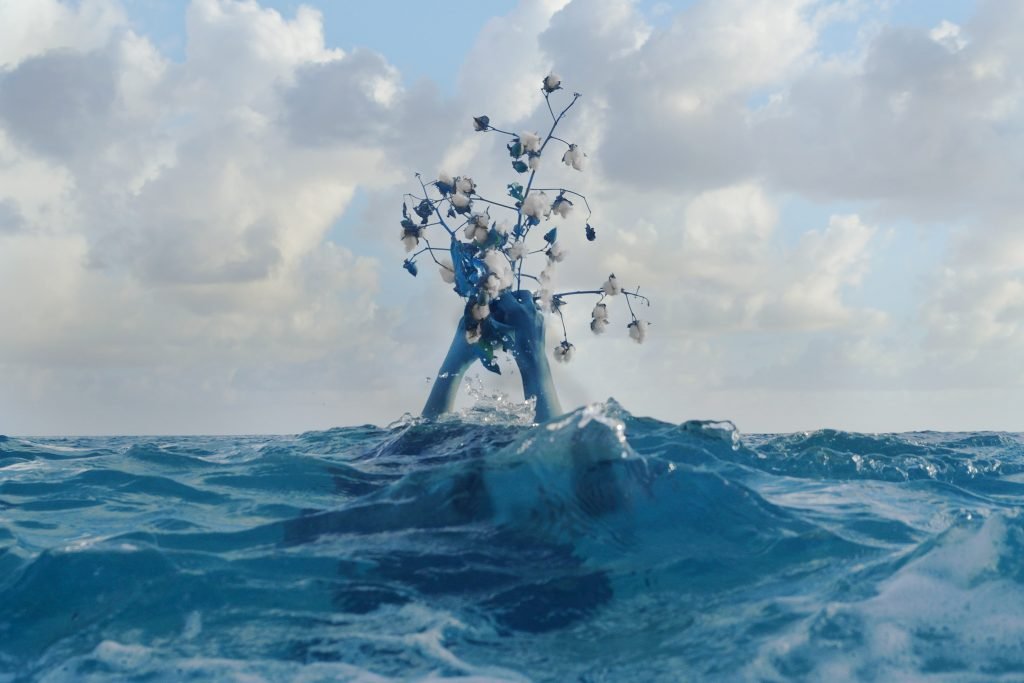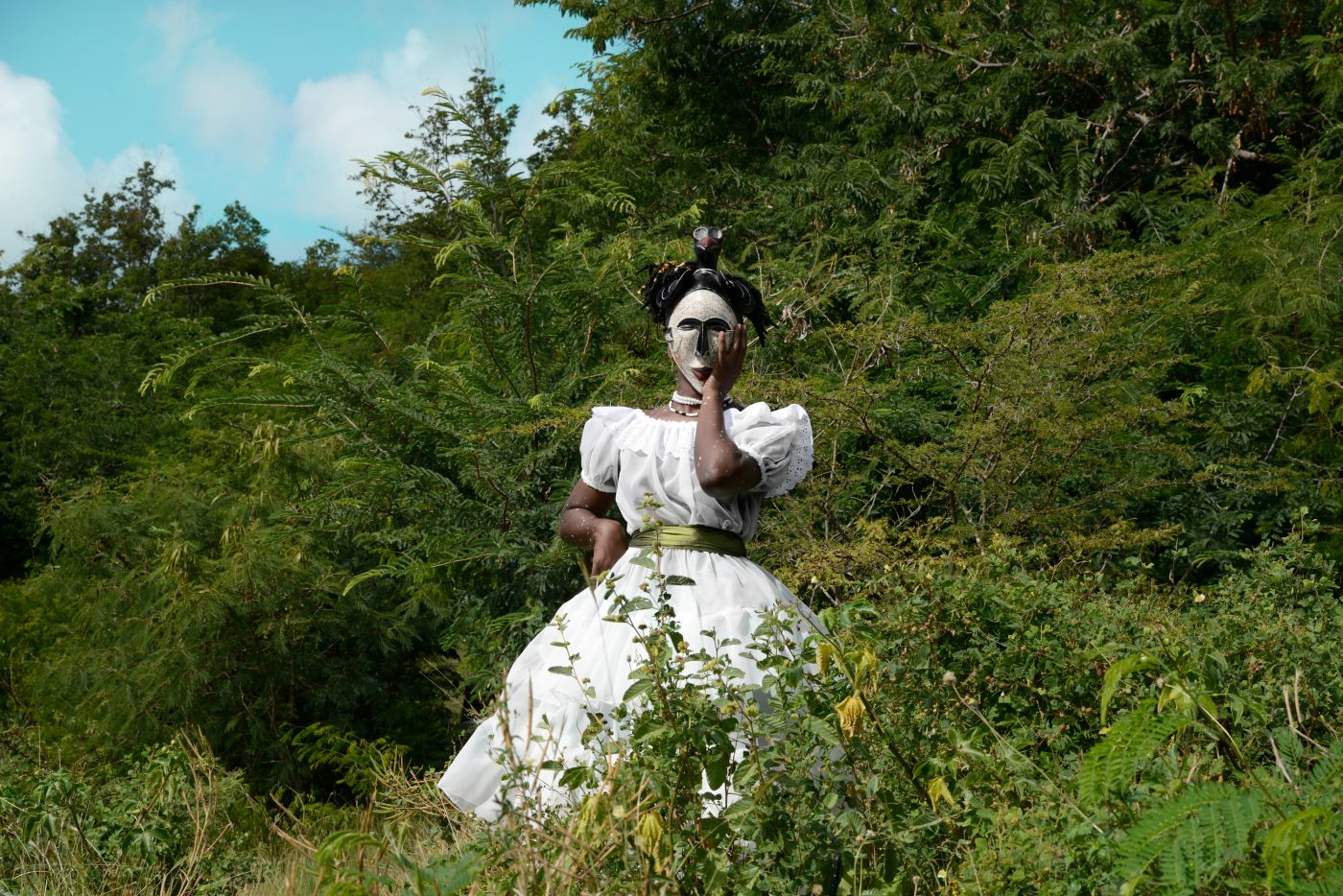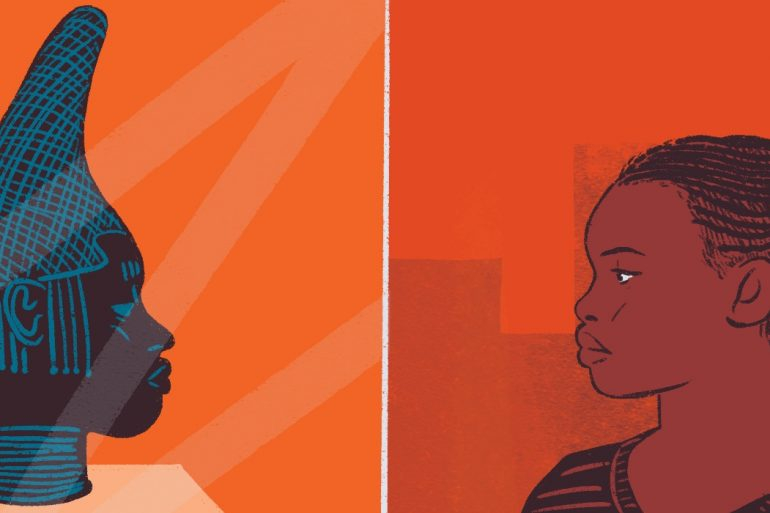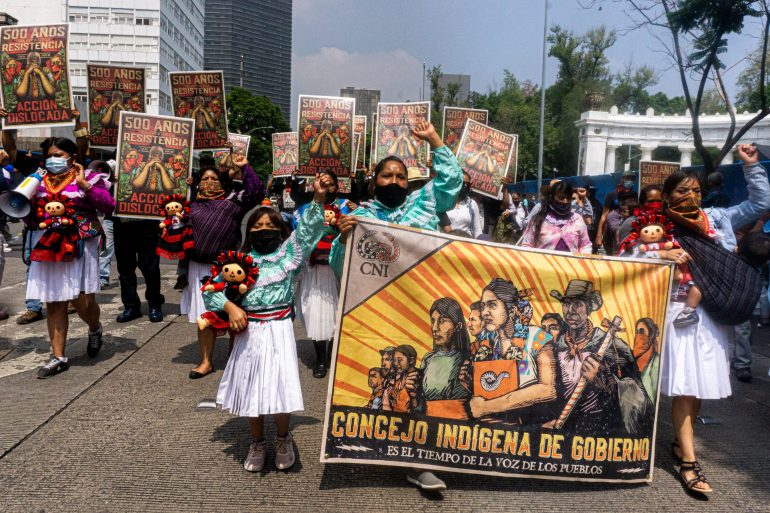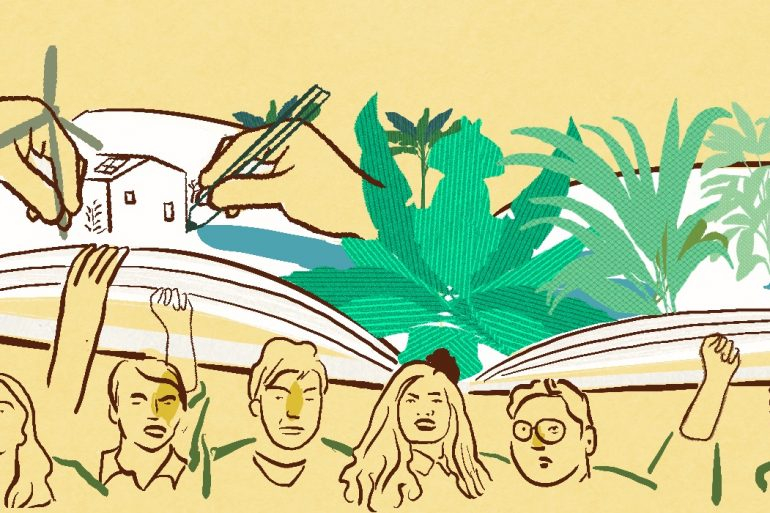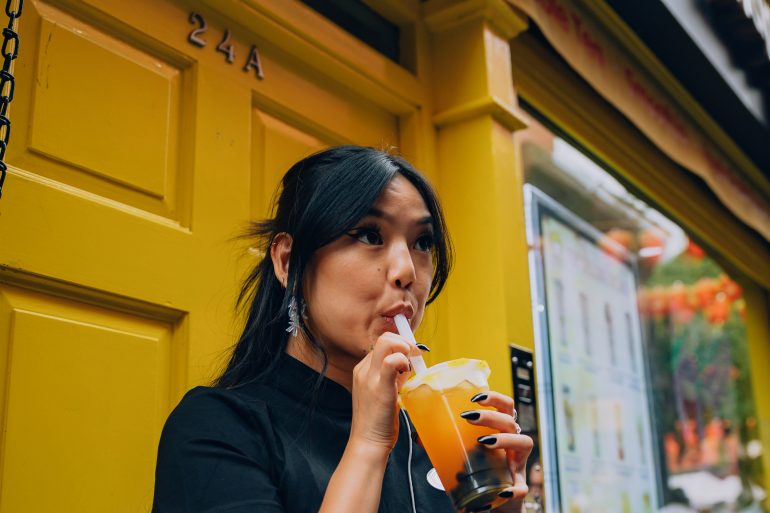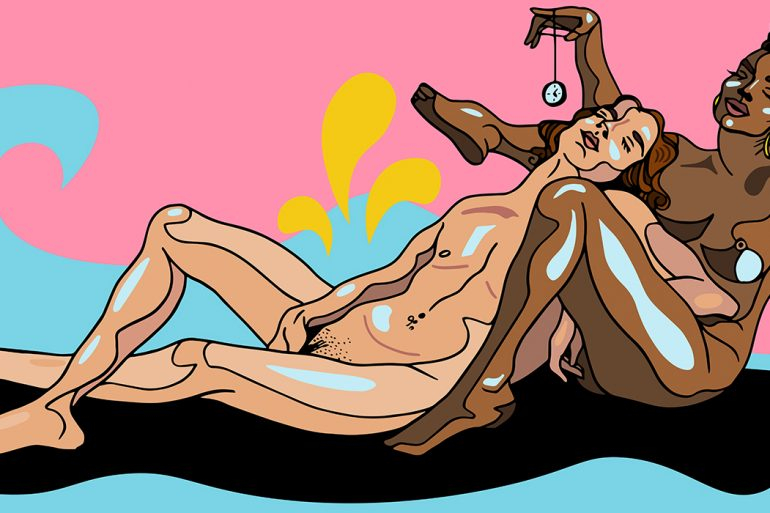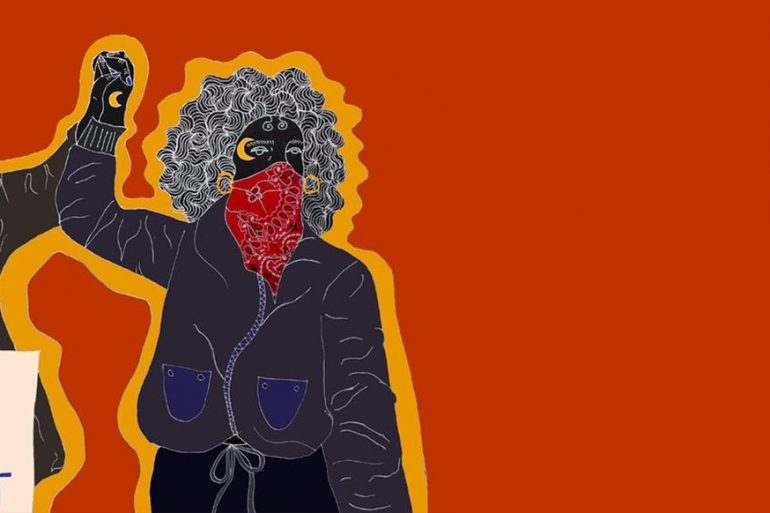“Do you believe in ghosts?”, asks Lisandro Suriel, a Caribbean photographer whose work I first came across while escaping the rain in Glasgow. A question I am yet to find an answer to, it is this quandary which Lisandro hopes his viewers will walk away contemplating.
Ghost Island, a collection of stunning ethereal portraits which weave in oral Caribbean histories, is a response to the restrictive and colonially-driven narratives that have dominated western portrayal of the region. As an antidote, Lisandro stages his photography as an exploration of the magic that was embedded into his history and childhood growing up in Saint Martin. By pushing the uncanny to the fore, Lisandro is working to preserve cultural memory and asking the viewer to reflect on their own presuppositions and beliefs.
I caught up with him to discuss magical realism, the role of photography in colonisation of the Caribbean and how the younger generation’s relationship with magic is changing.
Can you tell me a little bit about your journey into photography?
Not having a television for the greater part of my childhood prompted me to develop and retreat into marvellous worlds. As a child I always believed that islands were masses of land adrift at sea, and I always wondered what lay underneath.
Rather than coral reefs, I thought that the dark patches that I saw in the ocean while flying over on a plane were islands under water. I always wanted to go there to see what it was like: what would an under-water mountain look like? What would the sky look like?
Since I was a child, I have always been engaged with nature and the magic that I understood to be embedded within it. This is where my true inspiration lies: within the mysteries of nature.
As a child I would conjure up many stories about these mysteries and would often illustrate them in comic-book-form, simply write them down, or incorporate them into silly games. As I got older, and attended high school in the 2000s, the point-and-shoot cameras came into fashion. It was at this moment I noticed that a camera could become an effective tool for co-creation with nature. The camera, as an extension of my own eyes, meant I could now show people more accurately the world as I perceived it.
After high school, I left the Caribbean to further my education in Europe. As part of my Master’s thesis, I analysed early twentieth century illustrations of West-Indian mythology in relation to cultural aphasia. This research forms the foundation of my ongoing artistic research project Ghost Island.
It was during this trajectory when I became aware of the importance of harnessing the imagination and the creativity embedded in nature for the production of knowledge; in particular, knowledge about identity.
Why is photography so suited to exploring magical realism?
The medium of photography is a perfect way to transcribe the realities of magical realism embedded in the Caribbean landscape, and make it easy for audiences to engage with.
Personally, I define magical realism as an uncanny occurrence that could take place in theory, but is, at the same time, highly unlikely. Such occurrences might be so slight as to evade any direct form of documentation.
However, expressions of the uncanny appear to manifest themselves quite well by way of photography; a medium in which certain realities must actually unfold before a lens in order to record it. This is how photography aids in a very real documentation of immaterial imagination, and renders it in a way that we are able to understand it; in the visual language of empiricism.
When it comes to presentation, print, digital, moving images, installations etc., it is the hauntological quality of photography that intrigues me. After being taken, each photograph seems to take on a life of its own and carves out its own path in society and history, touching people as it moves along.
This almost self-sentient aspect of photography encourages me to approach the physicality of photographs as if they were icons in an animist sense; relics to a shrine of understanding.
Images are portals to knowledge; singularities that will always harbour secrets, for they are the fractal symmetry to the realities in which we live.
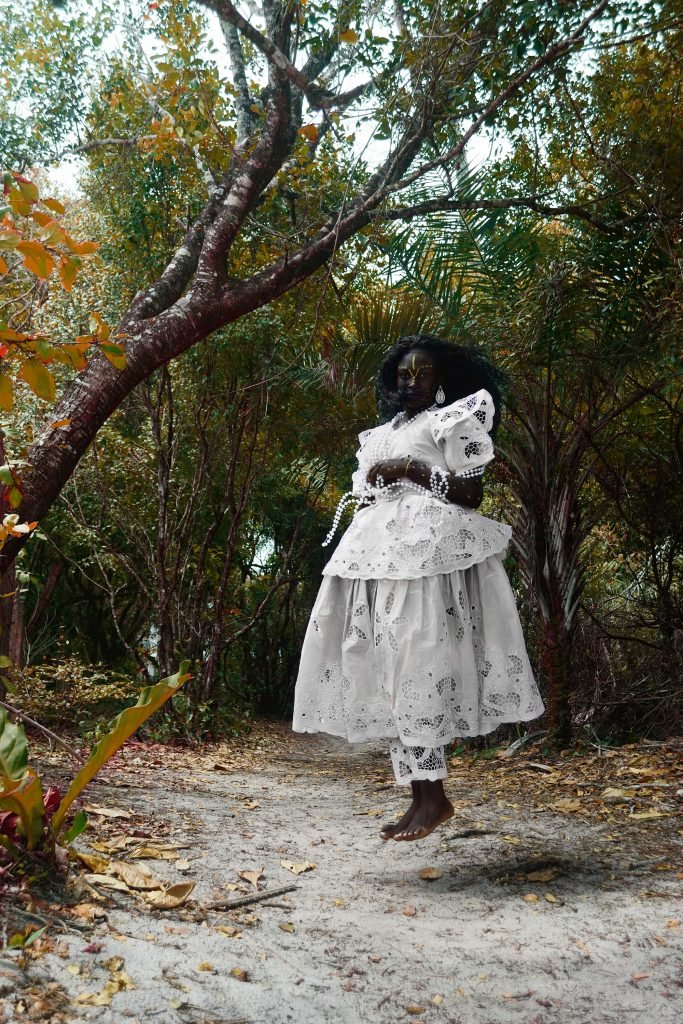
Can you tell me more about the roots of magical realism?
From an art history perspective, magical realism began in the mid 20th century as a literary movement by Latin American writers.
These writers reflected the uncanny, magic, and superstition woven into the fabric of their societies. In Latin America and the Caribbean, stories that were fascinating, absurd, and seemingly irrational were more likely to be seen as real events than they would in Western countries.
Hence, more than a genre, magical realism also constitutes the paradigm in which I grew up in the Caribbean, where magic is intrinsically embedded into reality.
Such a paradigm also challenges Western ways of perceiving realities and identities in a decolonial way. As magical as my work and research purport to be, they are always grounded in the real. In short, my photography employs magic realism to make an observation of Black Atlantic realities.
Tell me about your project Ghost Island.
Do you believe in ghosts? What a tricky question! In answering it, not only does one reveal how they perceive the world around them, but they also inadvertently express their engagement with that world. For some, spectres are mere figments of the imagination, while others regard them as an unequivocal truth at the foundation of reality.
Subscribe to shado's weekly newsletter
Exclusive event news, job and creative opportunities, first access to tickets and – just in case you missed them – our picks of the week, from inside shado and out.

Often spoken of in hushed tones, growing up in Saint Martin, I found the subtle existence of the uncanny and belief in magic heavily intertwined with day-to-day experiences on the island. Whether feared or revered, these mysteries frequently manifest as ghost stories, superstition and lore, forming a spectral framework for discussing a collective subconscious rooted beyond the scope of modernity.
Where does this framework come from? What do our ties to magical realism tell us about who we are and where we came from? As a child of the African diaspora, I found that Western institutions never introduce the idea that Black history and identity might extend beyond the narrative of slavery and coloniality.
In response to this, I stage magic-realist recollections of ghost stories and other oral histories from the island and the wider Caribbean. I propose the imaginative lens as a way to analyse how folkloric figures act as historic agents and animate cultural memory.
As a documentary of imagination, Ghost Island posits the Black subconscious as a means of reconfiguring collective memory and reclaiming history.
In this way, I seek to uncouple the Black and Caribbean narrative from a one-dimensional colonial history. Ghost Island poses the three fundamental questions that underlie both my artistic research practice and my own ontology: ‘What constitutes a Caribbean and/or Black identity?’, ‘How can we imagine this identity?’ and ‘What cognitive tools can be developed to engage with Caribbean/Black identity?’
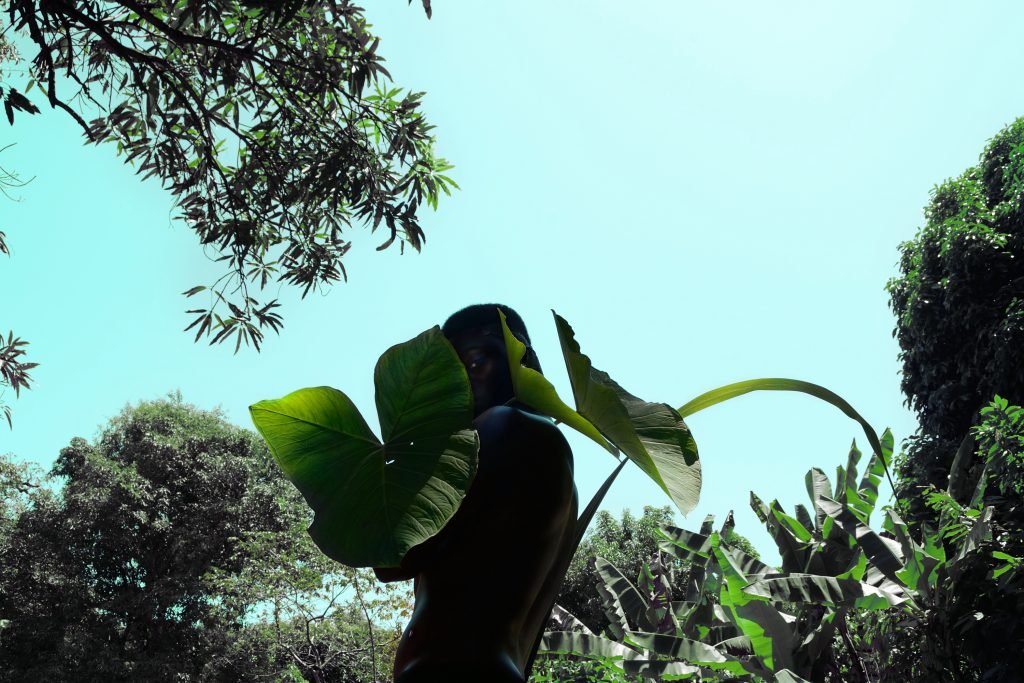
What excites you about the creative community where you are based?
I am very fond of the fact that the Saint Martin creative community feels like family!
Coming from such a small place, we’ve seen each other grow up and into our respective paths and careers. Being part of this community is like being part of a growing artist collective that houses an extensive network and variety of expertise.
Since there are no institutions of higher education that offer extensive art programmes, many of us had to leave in order to procure formal training and education. Subsequently, upon our return, we each bring with us an armoury of knowledge from different cultural exchanges, institutions, and countries that we can then share with each other.
Importantly, this ever-expanding family of creatives is held together by the community elders who paved the way for cultural discourse in Saint Martin. These elders are also the keepers of our histories and cultural memories that we can never learn at foreign institutions. They are the griots of Saint Martin, the matriarchs and teachers of our extended creative family; passing down their knowledge to us.
As a Saint Martin creative, you can only engage with local art and art history through direct engagement with the community in an oratorical way.
Without this process, much knowledge would be lost to cultural erosion. Saint Martin, with mass tourism as an economic focus, isn’t quick to prioritise art and culture and therefore neglects the setting up of the infrastructure that effectively fosters its development.
Thus, the virtue of Saint Martin’s creative community is found in their collaboration, resilience, and innovation, despite existing within a funding vacuum. Rather than relying on institutional frameworks as a top-down system, the creative community is the infrastructure for art and culture itself. It grows from the ground up and is always looking for ways to present and express culture while preserving and driving the collective discourse on identity forward.
Consequently, I am in awe of the community’s bravery and vulnerability. No matter how supported or unsupported the creative community has been, it is generally characteristic of society to still place the responsibility of cultural integrity on the shoulders of these creatives.
In other words, with the odds stacked against them, in the long run, my creative family will still be subject to history’s unforgiving critical gaze and judgement. This is a feat of vulnerability matched only by their commitment and love for the Saint Martin community and their respective practices.
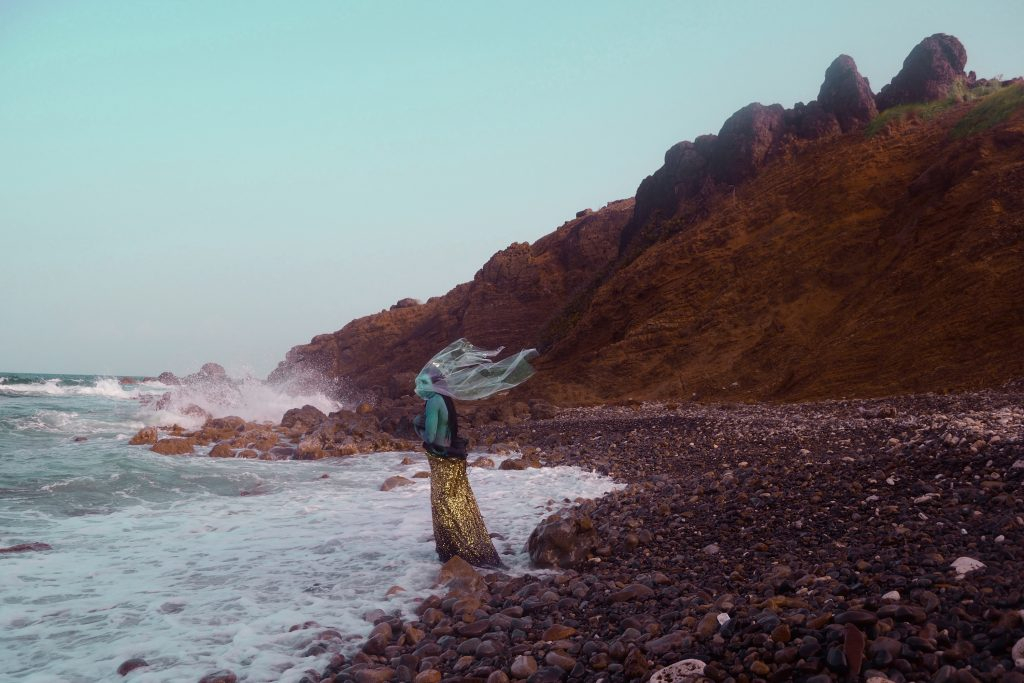
What role do you see photography having in the wider movements concerning de-colonisation in the Caribbean?
More than merely having a role to play, photography has the responsibility to contribute to this movement! Since the advent of Western imperialism, portrayals of the West Indies have always been skewed for the interest of Western societies. Hence, even today, the semiotics of Caribbean visual representation in popular culture is fundamentally Eurocentric.
After the abolition of slavery, the Caribbean largely underwent a rebranding of its harsh and unappealing plantation landscapes for the purpose of appealing to the emerging lucrative market of tourism.
By the 1880s, white elites, colonial officials, and participants of the tourist industry took the initiative to transform Jamaica and the Bahamas into tourist-friendly zones. This was achieved by making it look as if these islands were tropical paradises. Subsequently, palm trees, as well as other allochthonous plants from other tropical and subtropical regions were introduced.
Fruit companies, who were the first endorsers of tourism, deployed photographers to depict ideal West Indian landscapes. Thus, the objective of photography was to deliberately erase the ordeals and devastation of the Atlantic slave trade from a framed ideal. In this process, Indigenous and ancestral cultural memories were eroded as well. This is how the history of photography is deeply intertwined with current states of institutionally induced amnesia regarding contemporary Caribbean narratives and identities.
Today, globalised economic strategies in the Caribbean continue the tropicalisation process with the perpetual erections of resorts, casinos, spas, and other accommodations for the sake of Western tourist consumption. Growing up, I’ve often seen the erasure of cultural heritage and ancestral ways of life in exchange for tropical ideals. This process of erasure has come to be masked by the label of ‘progress’.
‘Progress’ is a most destructive paradigm that is at once a result and appropriation of a colonial strategy designed for exploitation. It is through the paradigm of progress that many of us have been trapped in societies wherein we live in perpetual service to the same West to which we were once enslaved.
This is why I believe that, more than any other medium, it is the primary responsibility of photography to undo its colonial grip on the region’s visual culture. New Caribbean photography may unearth novel semiotics that might in turn yield more productive ways to conceive of the self and redefine ‘progress’. In short, photography’s role should be to contribute to the visualisation of a decolonial landscape in the Caribbean, with the purpose to undo centuries of Eurocentric framing and imposed identities.
Have you seen a generational shift in approaches to/ a belief in magic? Are young people reconnecting to this?
As my previous answer might have hinted at, there are many socio-historical factors that have contributed to the erasures of certain cultural and spiritual practices in the Caribbean. On the one hand, in many cases, ancestral African spirituality has been rendered a taboo in exchange for orthodox Eurocentric belief systems. During the colonial era the European colonists instilled a widespread fear of African magic as a means to assert cultural dominance.
As a result of this, there are still many people who denounce ancestral spiritual practices as evil today, while also still believing in them enough to fear them. On the other hand, in the face of modernisation, ancestral ways of doing and thinking have been framed as primitive. This in turn, discourages engagements with ancient African philosophies and paradigms.
These days however, in my experience, there seems to be a slow shift taking place in the minds of my contemporaries. Perhaps arising from the urgency to reapproach sustainable cohabitation with the planet, many people today are slowly awakening to the fact that we must fundamentally engage the world differently. Whether or not this process is spiritual, I generally find it to be coupled with a belief in something more than what we have been taught. I find that this search constitutes the magic by which this generation is enthralled.
In the Atlantic world, we are living in a time where a generation of people are slowly coming to grips with the fact that they have institutionally induced amnesia and are existing between the nostalgia for a forgotten past and the possibilities of futures lost. In turn people have indeed become increasingly more open to magical paradigms as a means to combat the mnemonic gaps left behind in the wake of colonialism.
What can you do?
Reclaiming your history starts with the shattering of illusions.
Read:
- An Eye for the Tropics: Tourism, Photography, and Framing the Caribbean Picturesque by Krista A. Thompson
- Strange Encounters: Embodied Others in Post-coloniality by Sara Ahmed
- Blacks in the Dutch World: The Evolution of Racial Imagery in a Modern Society by Allison Blakely
- An aesthetic education in the era of globalisation by Gayatri Chakravorty
- Language, Culture, and Identity in St. Martin by Rhoda Arrindell
For some it also involves an introduction to the mysteries and the wisdom of the ancestors.
Read:
- African Narratives of Orishas, Spirits and Other Deities by Alex Cuoco and Dorothy L. Suecoff

